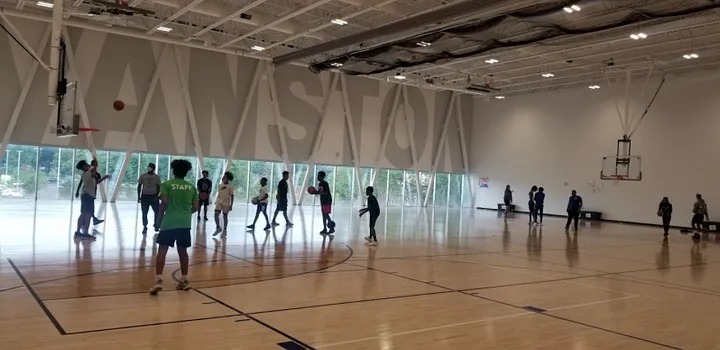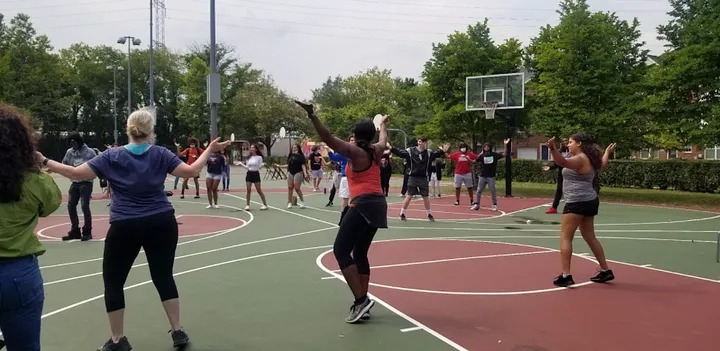Evanston, Illinois, USA
Data guides Evanston’s youth violence prevention strategy.
Project Type:
Youth Development, Community Engagement, Public Safety
At a Glance
The first city with a population under 100,000 to achieve Certification.
First-of-its-kind program that uses historical data and research to determine the specific impacts housing discrimination had on Evanston’s Black community and how to equitably correct it.
Tracked attendance to youth violence prevention programs and in response developed Know Your Rights and financial planning workshops to better meet attendees’ needs.
In 2019, 605 students participated in a summer employment program, and the program had a 97% program completion rate.
The Problem
Every day across the United States, youth violence impacts thousands of people. Homicide is a leading cause of death for youth aged 10 to 24 — and the COVID-19 pandemic has worsened youth gun violence in many communities, including Evanston, Illinois. In March 2021, two young men were killed in a targeted shooting in Evanston; another young man was wounded.

In response, the City of Evanston decided to improve and expand its youth violence prevention programs by utilizing performance and analytics, data measurement and stakeholder engagement. Launched in May 2021, Evanston’s My City, Your City, Our City initiative offers young people alternatives to hanging out on the streets. The idea was to provide free activities and events for youth aged 13–18 who might be suffering stress from social isolation and other factors during the pandemic.
The Idea
So Thompson and her team got to work. My City’s three-pronged strategy involves community centers, First Fridays events, and BLOCK Parties. (The acronym stands for Bringing Love to Our City and Kids). In partnership with local nonprofit organizations, free programming is tailored to residents’ interests based on continuous data collection.
“The idea was to create this programming for students, by students.”
A Range of Data-Driven Offerings
From day one, community centers such as the Robert Crown Community Center focused on outreach and engagement with young people. City staff conducted focus groups, asking young people what programming should look like. They also sent out surveys via text, held town hall meetings, and created an idea board and suggestion box where young people could share their thoughts.
Over 490 youth participants were registered for My City initiative programming during summer 2021. With schools back in session, about 230 people were registered as of December, when anywhere from 50 to 100 youth were visiting the Robert Crown Center on a nightly basis. Programming catered to youths’ interests includes financial planning sessions, “Know Your Rights” workshops focused on positive police interactions, basketball games, ice skating, and video games. The City uses a QR code system to register youth and track attendance, helping staff evolve programming based on proven interest. An internal dashboard details who is signed up from what neighborhoods, ensuring that program offerings attract youth from the highest-need City Wards. Even the meals offered to youth during My City activities are based on survey data and food waste tracking.
My City summer 2021 events and programming coincided with a steep drop in youth ticketed or arrested by police officers. The Youth & Young Adult Division receives all complaint tickets written for youth in lieu of an arrest. Zero complaint tickets were filed during the summer months, when My City was running the majority of its programming. (Complaint tickets can be addressed by either paying a fine or completing a community engagement plan with the Division and getting involved in My City programming.) The number of individuals aged 14–24 who were arrested dropped from 238 in 2020 to 146 in 2021.
“People who are engaged with the community and care about it are less likely to do things that would hurt the people who live in it,” Thompson says.
“These events bring the community together, creating a space where we can offer services and connect with those in need.”
How Data Helped
Data analysis has been crucial for aligning programming to youths’ needs and interests. For example, after staff started seeing youth younger than 13 and older than 18 coming to the Center, they collected data to understand these participants’ needs. Then they adapted programming accordingly, offering extended basketball hours for older youth, opening a drop-in center for middle-school youth, and providing tailored homework assistance for all.
The other two prongs of the My City initiative — BLOCK Parties and First Fridays — were designed to bring entire local communities together. Data showed that neighborhood Block Clubs and their events helped to reduce violence in Evanston in 2015 and 2016. So the City supported six events last year, including a Back to School Resource Fair and an Equity Summit. It also hosted monthly “First Friday” events in June, July, and August; during that period, no shootings occurred in Evanston. Event attendance began at 100 in June, growing to an average of 400 people per event. (After a shooting incident in September, the City also hosted a “Fall Fest” event in October.)

Bringing At-Risk Teenagers Into the Workforce
Data collection and analysis also proved valuable to the Mayor’s Summer Youth Employment Program (MSYEP), another City youth violence prevention initiative. The program provides skill-building and job opportunities to at-risk teenagers aged 14–18. Participating youth receive up to nine weeks of entry-level work experience in a variety of jobs and sectors through community-based organizations, City departments, and businesses. Over 640 young people participated in the program in 2021, with 68% of these youth participating for the first time.
The City tracks a range of data streams to continuously strengthen MSYEP. For example, when staff saw an uptick in participants under the age of 16 last summer, they streamlined work permit processes and created connections with local organizations to ensure employment opportunities for those under 16. When data showed the broad use of paper checks among employers, rather than direct deposit, the City facilitated financial literacy training for participants. And by tracking MSYEP job fair attendance by Ward, the City is able to ensure more equitable access to the program.
“All of the data we’ve collected has allowed us to find and create opportunities for youth who would traditionally have trouble obtaining or retaining an employment opportunity.”
Technical assistance and coaching sessions from WWC’s partners, and opportunities to connect with other WWC-Certified cities, have been crucial for driving Evanston’s youth violence prevention programming efforts forward, she adds.
In 2022, the My City initiative will be expanding year-round, with regular events held in high-need areas of the city. New youth programming focused on high school students began recently at the City’s Gibbs-Morrison Cultural Center and the Youth & Young Adult Division plans to help communities create more BLOCK Clubs.
A major takeaway for City staff has been that you cannot create an impactful program without learning the needs of the people it aims to serve. “The old statement ‘If you build it, they will come’ isn’t always true,” Thompson says. “You have to build something people actually want,” Thompson says. “The data should always guide your next step.”